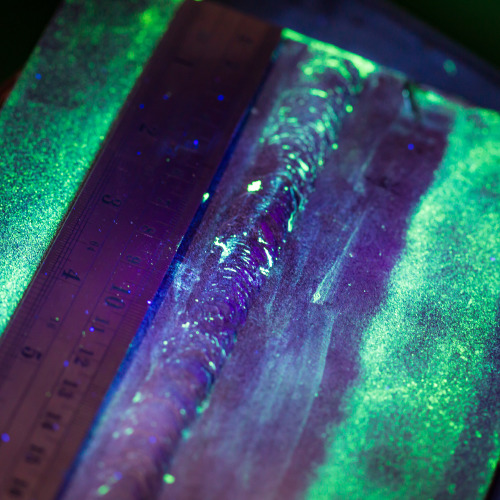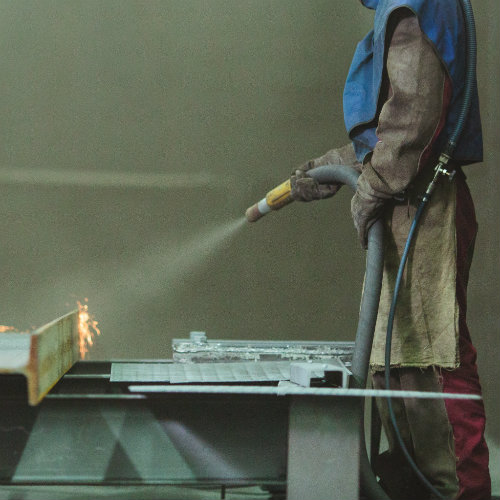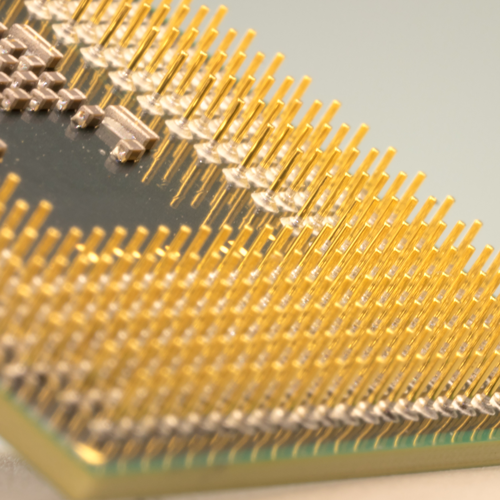Hardness Testing: Elevating Aerospace And Defense Capabilities
In the intricate dance of innovation and reliability, hardness testing emerges as a pivotal player, especially in sectors where materials face the harshest demands. The process of hardness testing isn’t simply a routine check; it’s a gateway to unrivaled quality and safety in aerospace and defense manufacturing. Valence Surface Tech understands the gravity of such a responsibility. That’s why we have honed our hardness testing techniques to perfection, offering unparalleled insights into material resilience that directly translate to performance in the field. Our dedication has put Valence Surface Technologies at the forefront of the industry, where each test strengthens the bonds of trust with our clients.
Looking for next-level hardness testing solutions that pioneer your projects into the future? Entrust Valence Surface Technologies to add unmatched strength and durability to your components.
What Is Hard Testing?
Imagine for a moment the complex world of materials. Each with unique properties, they serve as the building blocks of modern aerospace and defense technologies. Hardness testing stands as a critical examination of a material’s resistance to deformation, typically by indentation.
This isn’t a mere academic exercise—it’s a practical assay that answers essential questions about a material’s durability and wear resistance. At its core, hardness testing is the practice of pushing the limits, ensuring that materials can endure the stresses of their intended environment.
The Types Of Hardness Testing
Hardness testing is a diverse field with a range of methods tailored to specific materials and applications. Each type of testing offers unique insights into material properties, ensuring that materials perform as expected in their intended applications. Here are the primary types of hardness testing used in industry:
- Rockwell Hardness Testing: Recognized for its quickness and simplicity, Rockwell hardness testing measures the depth of penetration by an indenter under a large load compared to the penetration made by a preload.
- Vickers Hardness Testing: Known for its versatility, Vickers hardness testing calculates hardness by measuring the diagonal length of the indentation after applying a load.
- Brinell Hardness Testing: The Brinell hardness test is often utilized for materials with a coarse or uneven grain structure, such as cast iron. This test measures the diameter of the indentation made by a spherical indenter.
- Knoop Hardness Testing: Knoop hardness testing, with its elongated diamond indenter, is particularly effective for brittle materials or thin layers. It’s an excellent choice for measuring the hardness of small precision parts, providing a detailed profile of hardness variations in microstructures.
- Shore (Durometer) Hardness Testing: Primarily used for polymers and rubbers, Shore or Durometer hardness testing assesses the material’s resistance to penetration by a spring-loaded indenter. This test helps determine the elasticity of a material and is essential for materials used in seals, gaskets, and other components subject to dynamic stresses.
Understanding The Role Of Hardness Testing In Aerospace Engineering
Understanding the role of hardness testing in aerospace engineering is like shining a spotlight on the quiet yet powerful force that ensures our aircraft can withstand the extreme. Here’s how hardness testing makes a pivotal impact:
Material Selection
When selecting materials destined for the skies, engineers must prioritize structural integrity. Hardness testing enters the scene as an essential tool, enabling the selection of materials that can endure the rigors of flight. The process not only gauges a material’s strength but also its ability to resist deforming under stress and strain. It’s a critical step that ensures each piece of the aircraft puzzle fits perfectly, creating a cohesive whole designed to perform flawlessly at high altitudes and varying conditions.
Quality Control
Quality is not an aspect to compromise, especially in aerospace engineering. Hardness testing establishes a quantifiable standard, serving as a robust benchmark for quality control. This verification process ensures each component, no matter how large or small, embodies the excellence expected in the aerospace industry.
Every test performed is an assertion that the piece will meet, or even surpass, the rigorous standards set forth for reliability and consistency in aircraft manufacturing.
Longevity Of Aircraft
An aircraft’s lifespan is a testament to the materials from which it is crafted. Hardness testing is a significant factor in this equation, enabling the identification of materials that boast the resilience to resist wear and tear over time.
By choosing such enduring materials, hardness testing becomes an instrument for extending an aircraft’s service life, ensuring that aircraft not only fly but continue to do so reliably for years to come.

Cost Efficiency
The repercussions of material failure go beyond the evident safety concerns; they also strike a blow to cost efficiency. Hardness testing proactively identifies potential material weaknesses before they manifest in operational contexts, saving the industry substantial costs associated with unplanned maintenance and downtime.
It’s a preventive measure that secures not only the safety of operations but also the financial health of aerospace enterprises.
Innovation In Design
There’s an intricate dance between current capabilities and the aspiration for awe-inspiring technologies of tomorrow. Hardness test data acts as the sheet music for this performance, informing and inspiring the innovation in material science and design.
By harnessing this data, breakthroughs are made possible—fueling the fire of creativity and leading to the development of new materials and designs that launch aerospace engineering into its next visionary phase.
Ensuring Aircraft Safety With Advanced Hardness Testing Techniques
Harnessing the delicate balance between strength and resilience, hardness testing in aerospace engineering serves as the bedrock of material integrity and performance. This process employs precise indentation techniques and various standardized scales—like Rockwell, Vickers, and Brinell—to yield a quantifiable measure of a material’s ability to resist deformation.
These insights are more than mere numbers; they become actionable data that guide the selection and treatment of materials for every critical component in an aircraft, from the turbine blades to the landing gear. Compliance with rigorous aerospace standards is not a choice but a necessity, and hardness testing by entities like Valence Surface Tech ensures that conformity is met with unwavering accuracy.
The Fundamentals Of Hardness Testing In Aerospace Engineering
At the confluence of physics and engineering, hardness testing is a cornerstone of aerospace innovation. The process is foundational for determining a material’s suitability for the demanding conditions of flight. Here are the fundamentals of hardness testing in aerospace engineering:
Indentation Measurement: Hardness testing primarily involves measuring how a material responds to force by way of indentation, offering a clear gauge of material strength.
Scale Utilization: Different scales, such as Rockwell, Vickers, and Brinell, are employed to quantify hardness according to the testing context and material type.
Material Behavior Analysis: The test results inform engineers about behavior under load, including how a material might wear or fail in real-world scenarios.
Critical Component Assessment: Hardness testing is used to assess critical components like turbine blades, landing gear, and fuselage panels to ensure they can withstand operational stresses.
Standard Compliance: Conducting hardness testing helps ensure that materials and components conform to international aerospace standards, such as those set by ASTM and ISO.
Process Documentation: Every test is meticulously documented, becoming part of a quality control and certification process that guarantees material integrity and traceability.
Tailoring Hardness Testing For Aerospace Innovations
In the ever-evolving field of aerospace, each innovation is a step towards achieving the extraordinary, and tailoring hardness testing for these advancements is fundamental. Here’s how this meticulous adaptation shapes progress:
Customized Testing Protocols
Aerospace innovations demand customized testing protocols, which Valence Surface Technologies meticulously develops to match the unique specifications and performance criteria of new materials and components.
By calibrating hardness tests to these specific needs, we enable a new era of components that are not only lighter and stronger but also more adaptable to the cutting-edge designs reshaping the industry.
Integrated Development Processes
Hardness testing is not an isolated event but an integrated part of the development process. As new aerospace technologies take form, hardness testing interweaves with the design phase, ensuring that materials are vetted and perfected from the genesis of an idea to the final product. This integration is essential for the iterative process of innovation, helping to refine the balance between material properties and design requirements.
Predictive Performance Modeling
Through the data gleaned from tailored hardness tests, engineers and designers gain the ability to predict how materials will perform once they are part of a finished aircraft. This predictive capacity allows for precise modeling of future scenarios, equipping innovators with the confidence to push the boundaries of aerospace design while maintaining an unwavering commitment to safety and performance.
Advanced Coating Evaluations
The frontier of aerospace innovation often resides in the micro-thin layers of advanced coatings that protect and enhance aircraft components. Tailoring hardness testing to evaluate these coatings ensures they contribute positively to the overall hardness and durability of the material, thus playing a pivotal role in the protection against environmental stressors and operational wear.
Regulatory Alignment
As aerospace innovation continues, the role of regulatory compliance becomes increasingly complex. Hardness testing is tailored to ensure that even the most novel materials and processes meet the strict compliance guidelines set by international aviation authorities, emphasizing that these technological strides do not outpace the industry’s regulatory framework.
The Strategic Importance Of Hardness Testing In Aircraft Maintenance
The strategic importance of hardness testing in aircraft maintenance cannot be understated; it’s a keystone practice that ensures the airworthiness and longevity of airborne fleets. Hardness testing provides critical data used to make informed decisions about the maintenance cycle of aircraft components. Regular testing detects wear and potential weaknesses before they escalate into more significant issues, thus facilitating proactive maintenance that keeps aircraft operating smoothly.
This strategic application of hardness testing aligns with rigorous industry standards and plays a pivotal role in the meticulous upkeep that defines the aerospace sector’s commitment to safety and performance.
The Benefits Of Hardness Testing
Hardness testing stands as a sentinel of reliability and safety, this test is not just a procedure; it’s an assurance—a vow that the materials used in critical industries like aerospace and defense will hold firm against the pressures of their environment. Here are five essential benefits of harnessing hardness testing:
Guaranteed Material Integrity
Hardness testing is an unwavering gatekeeper, ensuring that every material utilized can resist the forces it will face. This assurance of material integrity is not just comforting; it’s vital, particularly in fields where material failure can have dire consequences.
Enhanced Safety Measures
By confirming that components can bear the operational stresses they’ll encounter, hardness testing bolsters overall safety. This pivotal tool is a guardian, protecting both the people who rely on these materials and those who are directly in harm’s way.

Design And Innovation Support
Hardness test data is the wind beneath the wings of innovation, offering engineers and designers the insights needed to push the boundaries of technology. This support system is the catalyst for the design of superior materials and components that lead the market.
Quality Control Consistency
In the relentless pursuit of excellence, hardness testing ensures a consistent level of quality control. Every test performed is a commitment to maintaining the highest standards, solidifying a reputation for excellence and consistency in product delivery.
These critical benefits illustrate why hardness testing is not just a beneficial practice but an essential one. With each test, companies like Valence Surface Technologies reinforce the trust clients place in their components, ensuring that they perform exceptionally under any circumstances.
Final Thoughts On Hardness Testing
In this exploration of hardness testing, we’ve illuminated its central role in safeguarding the integrity of materials in sectors where the margin for error is infinitesimal. From selecting materials that will sustain the demands of aerospace to ensuring the lasting safety of critical defense components, the insights rendered from hardness testing have been shown to be invaluable. It’s a meticulous practice — one that supports the perpetual quest for perfection in engineering and manufacturing, and a testament to the advancements that continue to propel these industries forward toward new pinnacles of innovation and reliability.
For those committed to the highest material performance and quality standards, Valence offers more than just testing. Our expertise in hardness testing is essential for your operations, providing thorough analysis and precise results crucial for informed decision-making. Partner with us to see how our focus on excellence in hardness testing can propel your projects to the top of industry standards.
Frequently Asked Questions About Hardness Testing
What is hardness testing?
Hardness testing measures a material’s resistance to indentation. It’s like poking something to see how much it pushes back. This helps predict how a material will perform under pressure, wear, and tear.
What are the main types of hardness tests?
Brinell, Rockwell, Vickers, and Mohs are popular options. They use different indenters (balls, cones, diamonds) and loads to measure hardness on various scales.
How does hardness testing work?
An indenter presses into the material, leaving an imprint. The depth or area of the imprint is measured, and a hardness number is calculated based on the applied load.
What affects a material’s hardness?
Composition, grain size, heat treatment, and even impurities can significantly influence how hard something is. For example, steel gets harder when quenched (rapidly cooled).
Why is hardness testing important?
It’s vital for quality control in manufacturing. Hardness tells us if a material meets specific requirements for strength, durability, and wear resistance.
Brinell vs. Rockwell: What is the difference?
Brinell uses a large ball indenter for softer materials, while Rockwell uses a smaller ball or cone for various hardness ranges. They have different strengths and weaknesses depending on the material and application.
What is the Mohs scale, and how do I use it?
It ranks minerals from 1 (talc, softest) to 10 (diamond, hardest) by their ability to scratch each other. It’s a simple tool for relative hardness comparison.
When do I use a Vickers test?
For very hard materials or thin surfaces where other indenters might be too large. It leaves a square diamond imprint and provides highly accurate hardness values.
What is the Shore test good for?
Measuring the elasticity (springiness) of soft materials like rubber or plastics. It uses a calibrated durometer with a rounded tip that presses into the material.
How do I choose the right hardness test?
Consider the material type, hardness range, desired accuracy, and surface size. Consulting a testing expert can help you choose the best fit for your needs.
Sources:
- American Mineralogical Society. (2023). Mohs’ Hardness Scale. http://www.minsocam.org/: http://www.minsocam.org/
- American Society for Testing and Materials. (2013). Standard test methods for Rockwell hardness and Rockwell superficial hardness of metallic materials (ASTM E18). ASTM International. https://www.astm.org/Standards/E18.htm
- ASM International. (2017). ASM Handbook: Mechanical testing and characterization. ASM International. https://www.astm.org/e0018-22.html
- Brandl, M., Leitner, A., & Schwaiger, W. (2002). A comparison. https://www.asminternational.org/
Nondestructive Testing Services
Conductivity Inspection
Conductivity inspection measures the electrical conductivity of a metal part or component. This is an in process test of chemical processing to verify the integrity and consistency of a chemical processing operation.
Hardness Testing
Hardness testing verifies the hardness of the base material, and can be used to validate that previous processes have been performed correctly. All Valence products are guaranteed to meet specified standards.
FPI (Fluorescent or Liquid Penetrant Inspection)
Fluorescent penetrant inspection is a type of dye penetrant inspection where a non-permanent fluorescent dye is applied to a non-porous part to detect cracks and defects that are invisible on sight inspection. This type of inspection is a highly efficient method to testing parts.
Magnetic Particle Inspection
Magnetic particle inspection detects surface and shallow subsurface discontinuities in ferromagnetic materials. This inspection can give immediate data and reveal errors or defects. It will prevent future leaks and other flaws.
Eddy Current Testing
Eddy current inspection uses electromagnetic induction to find and characterize surface and sub-surface defects in conductive materials. It is a highly sensitive form of testing for small surface defects, providing immediate results.
Copper Sulfate Testing
Copper sulfate testing verifies the effectiveness of, or need for passivation on a stainless steel part. This test is proficient in advanced aerospace applications.
Boroscope Inspection
Boroscope inspection allows the internal surfaces of geometrically complex components to be visually inspected for surface finish integrity. The inspection can prevent small issues in materials that potentially lead to huge losses in the long-term.
Valence performs all of these services to the highest degree of care, with approvals for most prime, aerospace, and military specifications. Our products and services significantly enhance safety, long-term use, and consistency in the aerospace industry. View our specs here.
NDT Capability Sizes
| Valence Eastman | L | Valence Wichita | L | Valence Grove | L | Valence Garden Grove | L | Valence Los Angeles | L | Valence Seattle | L | Valence Everett | L |
|---|---|---|---|---|---|---|---|---|---|---|---|---|---|
| Eddy Current | No Limit | Hardness/Conductivity | No limit | Hardness/Conductivity | No limit | Abrasive Blast | 5' | Hardness/Conductivity | No limit | Hardness/Conductivity | No limit | Hardness/Conductivity | No limit |
| Hardness/Conductivity | No limit | Magnetic Particle Big | 6' | Penetrant | 24' | Glass Bead | 3' | Penetrant | 27' | Magnetic Particle | 4.5' | Penetrant | 30' |
| Magnetic Particle | 4.5' | Penetrant | 13' | Laser Part Mark | 4' | Penetrant | 6' | ||||||
| Penetrant | 20' | Stress Relieve Bake | 3' | ||||||||||
| Ultra Sonic Cleaning | 4' |
Nondestructive Testing News
Valence Surface Technologies Adds Nondestructive Testing (NDT) Capabilities in Southern California
GARDEN GROVE, CA MARCH 21, 2022 Valence Garden Grove Operations (formerly known as Coastline Metal Finishing) has completed the installation and commissioning of their new Nondestructive testing (NDT) line. The new line, along with inspection personnel, has passed...





